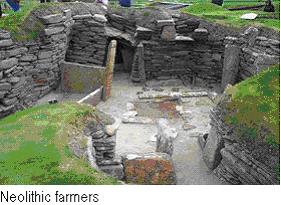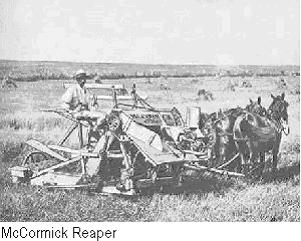There were four eras in the agricultural timeline. Prehistoric, Historic to Roman era, feudal, and scientific were the eras. Each of these eras had there important points in changing the ways of history.
During the Neolithic era there were many sites in Southern Asia and the Middle East areas. Some of the areas were particularly good for farming. These areas were the Huang He River, or Yellow River, the Indus River in the Indian/Pakistani area, and the Tehuacan Valley in Mexico. Through different records the earliest plant and animals were found predating the 6th Millennium B.C. Through Carbon dating some scientists have suggested that they have the earliest date of agriculture, which should be around 10,000 B.C. Though this is not proven as of yet, they have found other plants and animals. They have found domesticated sheep remains, dating back to 9000 B.C. in Northern Iraq and in 8000 B.C. they found goats in central Iran and pigs in Thailand. Also through radiocarbon dating, scientists have suggested that wheat and barley were domesticated in the Middle East regions in the 8th Millennium B.C. They also found millet and rice in China around 5500 B.C. They also found in 8000 B.C. squash in Mexico too. Other plants were also found in the Neolithic Era too.

Some of the first farmers would first find out whether a plant was eatable or not. If so they would save the seed and then later plant it in a large open field. After long period of growing one plant, it would soon become stable strain. They also looked for wild animals. They would look especially for animals that would yield milk or small horns. If they could the early farmer would usually try to herd such animals and domesticate them. The earliest domesticated animals were the cat, dog, and chicken. Slowly there was a transition form hunting and gathering to food production. Places such as Jericho, showed signs of surplus farming. Most tools made were made of wood or stone.
The Neolithic farmers lived in small caves or sun-dried brick houses and sometimes in villages. Most of the farmers had a mixed production of both herding and growing of plants. Usually herders lived on the steppes, to where most of the cattle were found. Some of the tools that have been found were made of wood and stone. The sickle or reaper that had sharpened stones to cut the wheat and then they would gather the grain. They also had the digging stick, which was used to plant seeds. The earliest plow was a modified tree branch used to scratch the surface of the area about to be used for planting. Later it was used by having oxen pull it. Farmers in Southwest regions of Asia were the first to use a system of irrigation.

The first invention in the advancement of the agriculture industry was in 1831. This year the McCormick Reaper was invented. This invention could cut as much grain in a day, which would normally take up to 12 men to do, but only need 2 men to operate. Since this let more men go to work in the industrial side of work, it slowly started the industrial revolution.